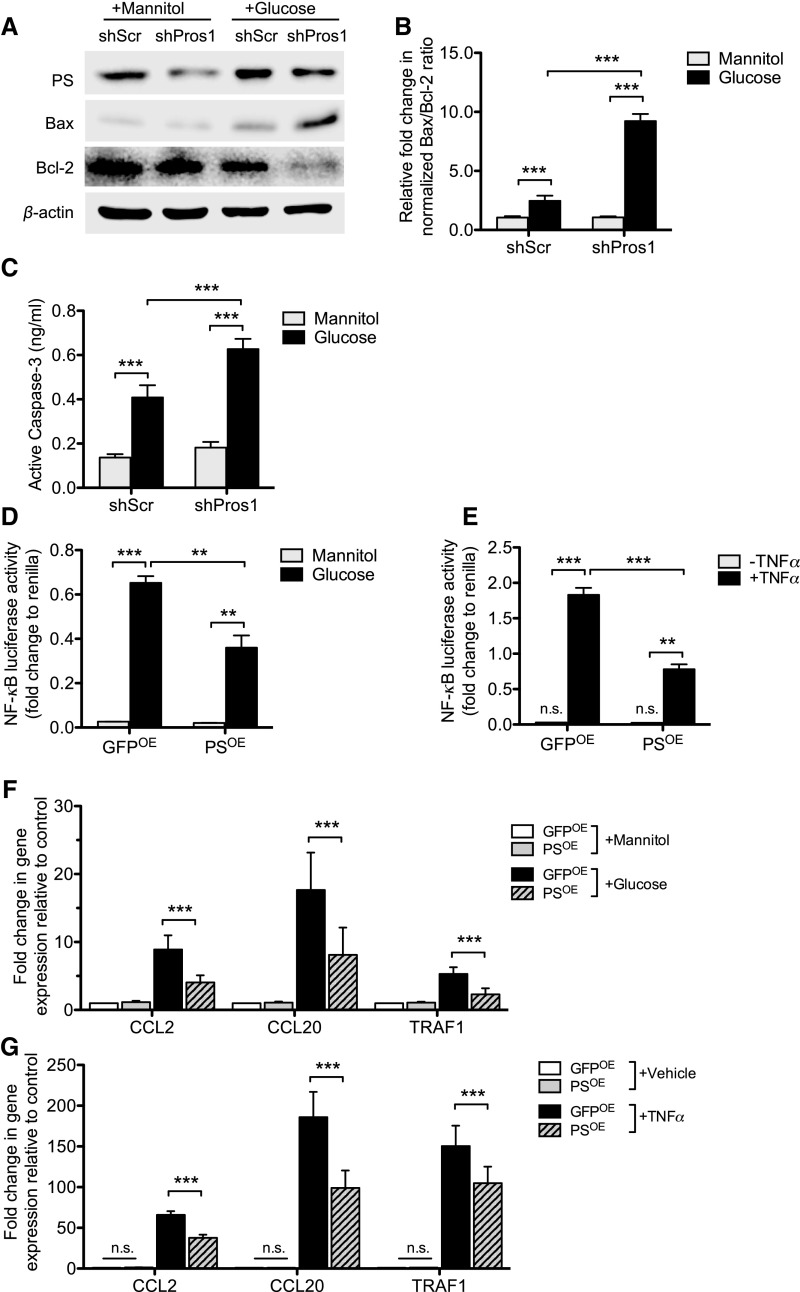Figure 4.
PS prevents hyperglycemia-induced apoptosis and dampens TNF-α-induced inflammation. (A–C) Podocytes stably transduced with lentivirus expressing either scrambled shRNA (shScr) or Pros1 shRNA (shPros1) were incubated with high glucose (30 mM) or high mannitol (5 mM glucose±25 mM mannitol) for 24 hours. (A) Western blots were performed for PS, BAX, and BCL2. Representative blots of three independent experiments are shown. Densitometry analyses were performed for western blots of Bax and Bcl-2 after normalization with β-actin. (B) Active Caspase-3 concentration was measured by ELISA. (n=3; *P<0.05, **P<0.01, and ***P<0.001 when compared between indicated groups.) (D-G) Podocytes were transiently transfected with PROS1 overexpressing vector (PSOE) or control GFP vector (GFPOE). NF-κB luciferase reporter assay (D) with high mannitol (25 mM) or high glucose (30 mM) for 48 hours or (E) with TNF-α (10 ng) for 24 hours. NF-κB luciferase reporter activity is shown as fold change to renilla luciferase activity. (F-G) Real-time PCR analysis of NF-κB–targeted gene expression (F) in high glucose condition or (G) with TNF-α treatment is shown. (n=3; *P<0.05, **P<0.01, and ***P<0.001 when compared between indicated groups.)

